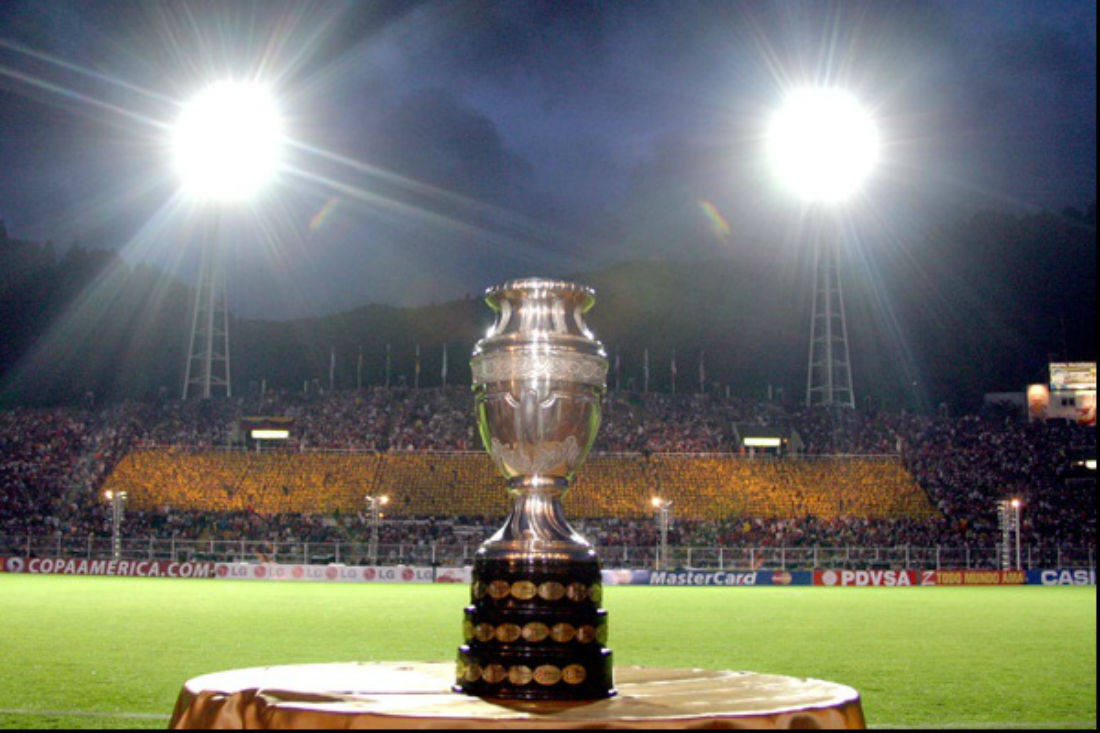Major soccer news dropping ahead of this summer’s World Cup tournament: The North and Central American soccer federation (CONCACAF) and its South American counterpart (CONMEBOL) announced that the 2016 Copa América will be held in the United States. The storied tournament historically has served as a championship for the national teams of South America, but this will be the first time it has ever been held outside the continent. 2016 marks the 100th anniversary of the tournament first being held, and the organizers undoubtedly wanted to do something special to mark the occasion. This edition will be known as the Copa América Centenario, and it will throw the U.S. national team, Mexico, and four other countries from CONCACAF to be determined into a tournament with the 10 countries from South America: Argentina, Bolivia, Brazil, Chile, Colombia, Ecuador, Paraguay, Peru, Uruguay, and Venezuela.
This is huge. This will be the biggest soccer tournament America has seen since it hosted the World Cup back in 1994, and it takes some of the sting out of getting jobbed out of World Cup 2022. So far, we in North America have had to content themselves with the CONCACAF Gold Cup. It’s no disrespect to the CONCACAF countries or the soccer players here to say that the talent in South America far exceeds that on our continent. This expanded Copa América means that American soccer fans will get to see some of the world’s best players up close, while the CONMEBOL nations will get to expose their talent to a huge and wealthy new market. It means that our players will get to face some of the best national sides in the world in a context where the game’s result actually matters. It means that after this summer’s World Cup, we won’t have to wait four years until the next major international tournament. We’ll only have to wait two, just the way the European nations do. And as Dan Levy points out on Bleacher Report, that could have repercussions for the selection of our team at this year’s World Cup, since Jürgen Klinsmann would feel less pressure to take a promising but untested youngster like Julian Green to Brazil. The coach could wait until 2016, when the player would presumably be more seasoned.
A bit of historical background on the Copa: The tournament was first held in Argentina in 1916. It was intended to be held every two years, but wars, political instability, and plain old disorganization resulted in some very spotty scheduling over the next decades, with no tournament at all taking place between 1967 and 1975. It won’t be the first time USA has been a part of the Copa. Because there are only 10 countries in South America, in the modern era outside nations have been invited to take part to bring the number of competitors up to 12 and make the format more manageable. These have come from as far afield as Japan and Spain, but America has taken part three times, finishing fourth in 1995. (That year, our guys upset an Argentina team led by Diego Simeone and Gabriel Batistuta. How did that happen?) The Copa hasn’t always been a priority for South American countries, which have generally treated World Cup qualifying matches as their must-win games. For the 2016 Copa to be a success, the likes of Argentina and Brazil will have to send their A squads. I’d like to think the specialness of this tournament and the chance to succeed in our country would be incentive enough.
There’s still details to be ironed out. The June 2016 dates cited would overlap with the European Championships in France — would FIFA want two major international soccer tournaments going on at the same time? And we don’t know yet which stadiums would host games. You’d have to think that AT&T Stadium would be in the running, but will the organizers hold the green sand debacle from last year’s Gold Cup against North Texas? Let’s hope not. For now, we can dream of seeing the likes of Lionel Messi, Luis Suárez, Neymar, or Radamel Falcao García play here, as well as our own Team USA.












